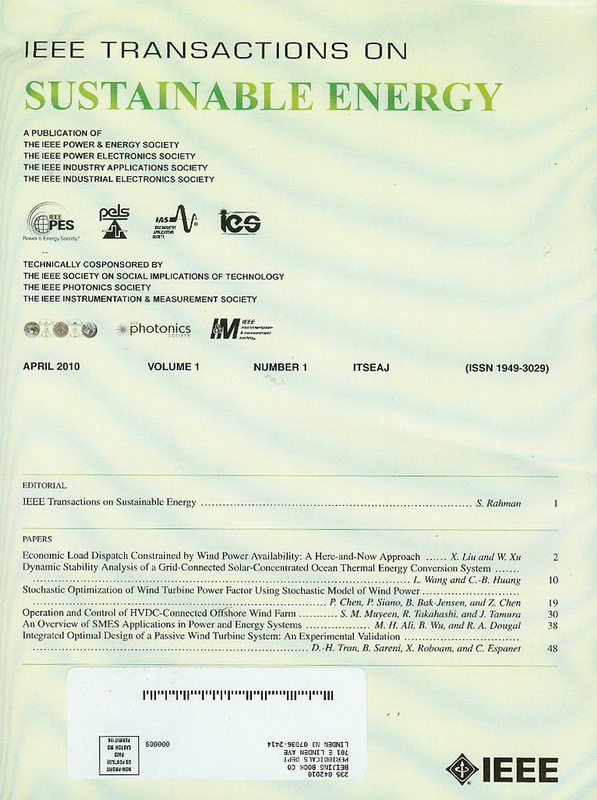Advanced Grid-Forming Undersea Pumped Storage to Enable 100% Renewable Offshore Oilfield Power Systems
IF 10
1区 工程技术
Q1 ENERGY & FUELS
引用次数: 0
Abstract
To advance carbon reduction of the offshore oilfield power system (OOPS), the grid-forming undersea pumped storage system (GFM-UPSS) emerges as a promising solution. This paper introduces a novel framework for a 100% renewable OOPS utilizing the GFM-UPSS. Firstly, the control strategy of the GFM-UPSS is presented. It consists of the grid-side converter (GSC), machine-side converter (MSC), and reversible pump-turbine (RPT) to achieve frequency and voltage regulation. A steady-state model is then developed detailing the water head, power, and volume of the spherical shell. In addition, the paper explores the converter parameter impacts on the GFM-UPSS transient model and derives the closed-form solutions. With the steady-state model, an optimal sizing method is presented and economic advantages in the marine environment are studied for the GFM-UPSS. Finally, EMT simulations are conducted to assess the frequency & voltage stabilities and verify the effectiveness of the GFM-UPSS in enabling a 100% renewable OOPS. The optimal sizing results show that construction costs, mainly for OWP, are dominated and are influenced by sphere radius, placement depth, and start-stop cycles, while a 2.5 capacity ratio between OWP and GFM-UPSS consistently emerges as optimal. Moreover, analysis of transient stability shows that it improves with higher frequency & voltage modulation coefficient and lower virtual impedance. The impact of RPT and MSC, mainly on frequency regulation, is determined by the DC droop coefficient and turbine inertia.先进的海底抽水蓄能系统,可实现100%可再生的海上油田电力系统
为了推进海上油田电力系统(OOPS)的碳减排,并网式海底抽水蓄能系统(GFM-UPSS)成为一种很有前途的解决方案。本文介绍了一种利用ggm - upss实现100%可再生OOPS的新框架。首先,给出了ggm - upss的控制策略。它由网侧变流器(GSC)、机侧变流器(MSC)和可逆泵-水轮机(RPT)组成,实现频率和电压的调节。然后建立了一个稳态模型,详细描述了水头、功率和球壳的体积。此外,本文还探讨了变流器参数对GFM-UPSS暂态模型的影响,并推导了闭式解。在此基础上,提出了ggm - upss的最优定尺方法,并对其在海洋环境中的经济效益进行了研究。最后,进行了EMT模拟,以评估频率和电压稳定性,并验证ggm - upss在实现100%可再生OOPS方面的有效性。最优规模结果表明,OWP的建设成本主要受球体半径、放置深度和启停周期的影响,而OWP与ggm - upss的容量比始终为2.5时最优。此外,对暂态稳定性的分析表明,频率和电压调制系数越高,虚阻抗越低,暂态稳定性越好。RPT和MSC对频率调节的影响主要由直流下垂系数和涡轮惯量决定。
本文章由计算机程序翻译,如有差异,请以英文原文为准。
求助全文
约1分钟内获得全文
求助全文
来源期刊

IEEE Transactions on Sustainable Energy
ENERGY & FUELS-ENGINEERING, ELECTRICAL & ELECTRONIC
CiteScore
21.40
自引率
5.70%
发文量
215
审稿时长
5 months
期刊介绍:
The IEEE Transactions on Sustainable Energy serves as a pivotal platform for sharing groundbreaking research findings on sustainable energy systems, with a focus on their seamless integration into power transmission and/or distribution grids. The journal showcases original research spanning the design, implementation, grid-integration, and control of sustainable energy technologies and systems. Additionally, the Transactions warmly welcomes manuscripts addressing the design, implementation, and evaluation of power systems influenced by sustainable energy systems and devices.
 求助内容:
求助内容: 应助结果提醒方式:
应助结果提醒方式:


